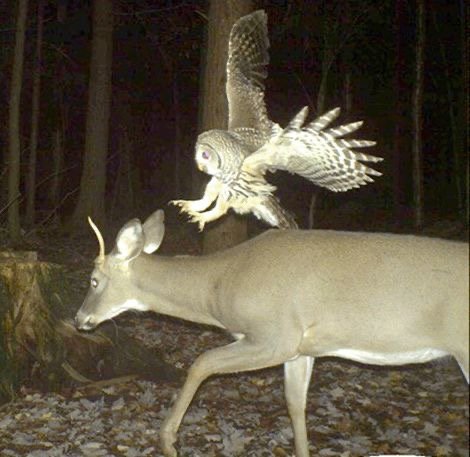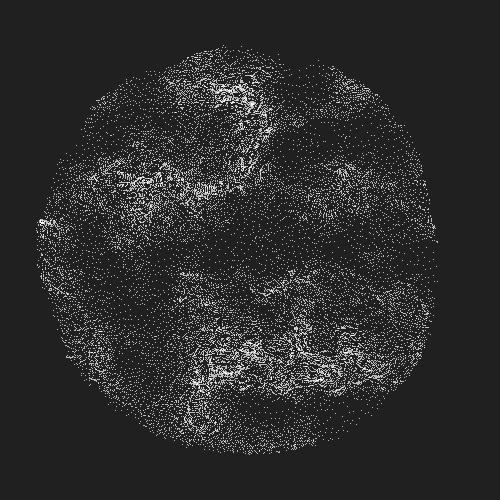
welcome to the 7sH QR
Experience
AND we plunge
deeper down the well
a techno-katabasis
breaking the
stasis field
1. Auburn Salcedo is the co-founder of the mysterious, synchronicity-generating app Randonautica and co-author of the book, The Official Guide to Randonautica…
Click the quantum cloud to visit Randonautica’s official website.
Click the cover to purchase the book.
2. The app went viral when a video surfaced of a group of TikTokers attempting to manifest “travel” found a suitcase under a pier full of human remains.
3. There’s also that time component The Fatum Project discovered which plays into concepts of retro-causation.
Retrocasuality (also called Backward Causation) is a concept of reverse cause and effect wherein B (future event) moves backwards to cause A (past event).
The concept has its roots in earlier Continental philosophy but has been scientifically quantified in recent decades via the field of physics where it has been demonstrated that, on the most fundamental level of particle interaction, there is no uni-causal directionality. In other words—particles interact with both the past and future simultaneously.
To quote from the preface of a conference proceeding on quantum retro-causation hosted by the American Institute of Physics (AIP): …all fundamental equations in physics are time-symmetric […] admitting both time-forward and time-reverse solutions…
This has been repeatably demonstrated with quantum computing by using weak values. In the experiments, quantum computers perform logic operations that unfold in temporal reverse, producing the output (B) before the input (A).
For a much more comprehensive history of retrocausality in quantum mechanics, check out this entry published in the Stanford Encyclopedia of Philosophy
The implications—especially when considering the developments in quantum biology which point to the possibility of the brain being a quantum computer of sorts—is that extensively documented ESP phenomena such as precognitive dreams, presentiment, and prophecy, may be the result of our brains receiving information from our future.
The most extensive experiments on presentiment were conducted by Dean Radin, PhD and chief scientist at the Institute of Noetic Sciences.
In the experiments, Radin sat participants in front of a computer screen and showed them random images designed to trigger a variety of strong emotions while measuring their physiological responses. Upon analyzing the data, Raiden found the participants elicited the predicted responses before the image was ever presented—even more—before the image was selected by the computer. The experiments were repeated exhaustively with consistent results.
Some of the greatest recent works on the topics of retro-causation and precognition come from Eric Wargo in his books, Time Loops: Precognition, Retrocausation, and the Unconscious, and Precognitive Dreamwork and the Long Self: Interpreting Messages from Your Future
Check out a full-length interview with Eric Wargo on the Hermitix podcast.
4. …reaching back into antiquity, this relationship [mind-matter interaction] was something realized and engaged with through ritual
Romanian professor, philosopher, historian of religion, and magician, Ioan Petru Culianu (or Couliano) described magic ritual as “a science of the imagination” in his masterwork—Eros and Magic in the Renaissance.
Here, Culianu describes how magic—often mistaken as a lesser, primitive form of science—was actually a holistic scientific system that was “qualitative” as opposed to our current “quantitative” model, and orientated towards complex and rigorous manipulation of “inner-phantasms”, or mental images.
Culianu then outlines how— historically—magical thinking was intentionally wiped out as a result of the Reformation and Counterreformation imposing complete censorship over any expression of the imaginative faculty, declaring all forms of inner phantasy as demonic.
He goes on to explain how the magical arts (manipulation of phantasms) were then recodified and weaponized by agents of the state and corporations:
The magician of the Renaissance is both psychoanalyst and prophet as well as the precursor of modern professions such as director of public relations, propagandist, spy, politician, censor, director of mass communication media, and publicity agent.
With the disappearance of ritual and the disenchantment of science, Culianu assures us, followed a relinquishing of control over our own imaginative processes.
Nowadays, if we can boast of having at our disposal scientific knowledge and technology that used to exist only in the phantasies of magicians, we must allow that, since the Renaissance, our capacity to work directly with our own phantasms […] has diminished. The relationship between the conscious and the unconscious has been deeply altered and our ability to control our own process of imagination reduced to nothing.
5. For so long science needed to be black and white […] but now technology is allowing us to bring the human experience into focus: all those stories described as metaphysical, parapsychological, paranormal, whatever you want to call it.
An early (and controversial) example of science having to confront classic paranormal claims came from the practice of Kirlian Photography.
Kirlian Photography is a set of techniques for capturing the electrical coronal discharges emitted by objects. It was discovered in 1939 by an outstanding soviet electrician named Semyon Kirlian, who quickly noticed a striking similarity between the “auras” captured in the photography and the auras claimed to be seen by the healers and mystics of occult traditions, as well as those depicted in the images of saints throughout the various world religions.
The technique found favor with the scientific and medical community in Eastern Europe and was adopted by doctors as a diagnostic tool for detecting physical illness, as well as giving insight into the subjects psychoemotional state.
Today, however, many of the paranormal claims surrounding Kirlian Photography have been dismissed by the majority of the scientific community who argue that mundane physical evidence demystifies the phenomenon. (For example, the amount of water residue [i.e., sweat] on the surface of the person or object photographed seems to have a parallel effect on the intensity of the “aura” light.)
Yet there are still many uncertainties and controversies surrounding Kirlian Photography, as some who still advocate for its potential in medical practice.
Regardless of its paranormal validity, it is documented that the CIA had a strong interest in Kirlian Photography as well as the other parapsychological research taking place in the Soviet Union. Here are a few declassified (albeit sanitized) CIA documents on the topic.
For more on the strangeness of Soviet parapsychology, check out this episode of the Subliminal Jihad podcast below.
6. …I've taken a huge interest in the theories surrounding time, from fantastical concepts like alternate dimensions and parallel lives, to much more practical methods of understanding time, such as the perception of time dilation and distortion.
One of the greatest discussions on the nature of time, relativity, and duration took place during a public debate between Albert Einstein and the philosopher Henri Bergson in Paris on April 6, 1922.
Click below for a fantastic lecture on the history and nature of this infamous debate.
7. …I lived in a way resembling Debord's theory of the dérive…
The Dérive is a psychogeographical concept put forth in 1956 by French Philosopher Guy Debord in an essay titled—Theory of the Dérive. (“Dérive” translates simply into “drift”.)
Debord describes a dérive as…
a mode of experimental behaviour linked to the conditions of urban society: a technique of rapid passage through varied ambiances
Simply put, a dérive is an act of aimless wondering, typically through an urban landscape—an intentional getting lost.
The goal of the Situationists—the group of avant-garde artists and intellectuals of which Debord was a founding member—was to "let themselves be drawn by the attractions of the terrain and the encounters they find there”
One can easily see why Randonautica cited Debords Theory of the Dérive as one of their chief inspirations.
8. …I had been in a waking-sleep for weeks and had fallen into a routine, sucked in by what you guys would call the stasis field.
The stasis field (as defined by Fatum researchers) is the entire set of casual relationships that limits the variability of potential outcomes of an experience.
It is a combination of all the rules that shape a person’s routes and behaviors: personal logic, social norms, fears, desires, habits, cognitive biases, life experience, as well as an infinite multitude of external factors. These rules create a web of possibilities and limitations for each person and dictate the events they may possibly experience.
The aim of Randonautica is to use quantum randomness to break down all those rules—to lead people to experience events in space and time that lay outside of the stasis field.
For a much more thorough explanation on the stasis field and more, visit the Randonautica theory page.
9. One of my favorite books is The Road of Time: Theory of Double Causality by Philippe Guillemant
The title of the edition of The Road Of Time currently being sold has changed, but the work is the same.
Click the cover to purchase.
10. …people forget the concept [synchronicity] actually comes from Jung.
Psychologist Carl Jung has defined synchronicity as
A meaningful coincidence of two or more events where something other than the probability of chance is involved.
These are highly improbable and non-causal (or perhaps retro-casual) events that happen in the external world which coincide fantastically with things happening in the internal world—thoughts, dreams, feelings, etc.
Jung worked hard to remove the superstitions surrounding such events and attempted to provide a scientific framework for studying them.
In his book—Synchronicity: An Acausal Connecting Principle’—Jung writes:
What I found were “coincidences” which were connected so meaningfully that their “chance” concurrence would represent a degree of improbability that would have to be expressed by an astronomical figure.
A famous example of synchronicity documented by Jung comes from a session with a patient of his—a young women of high education who Jung described as ‘psychologically inaccessible’. This was a women who was highly rational to the point of close-mindedness. Her cold impenetrable logic and skepticism made her emotionally impenetrable and unable to forgo the psychoanalytic treatment.
During one of their sessions, the women recounted a dream she had the night before. In the dream, someone had given her a piece of jewelry that had the appearance of a golden scarab beetle. At the same moment of her recounting the dream, there was a tapping sound against the window. Jung opened the window and caught a large scarab beetle with a gold-green color that matched the jewelry in the patients dream. Jung handed her the beetle—and that triggered a psychic transformation. The women’s cold logical mindframe had been punctured, and she was immediately opened up emotionally. From then on the therapy sessions continued with success.
11. The dense clusters are attractors, the empty spaces are voids.
Below is a visual representation of a point graph displaying the dense clusters (attractors) and empty spaces (voids) on a map.
12. We have all the parapsychological research done at Duke University [1] the CIA ran Stargate Project [2] and all the research done at the Princeton Engeinering Anomolies Research Laboratory (PEAR) [3] to name just a few examples
[1] The Parapsychology Laboratory at Duke University launched in 1930 with the collaboration of Dr. William McDougall, J.B. Rhine and his wife Louisa Rhine. It became one of the earliest academic institutions dedicated to studying paranormal and psychic phenomenon through a scientifically empirical lens.
During the labs 35 years of operation, many of the terms now associated with paranormal and psychic phenomenon were born such extrasensory perception (ESP), telepathy, clairvoyance, pre-cognition, and psychokinesis.
Check out this interview with Sally Rhine Feather, daughter of J.B. Rhine
[2] The Stargate Project was a secret army unit project established in 1978 aimed at investigating potential military use for psychic abilities. They were above all else concerned with the art of remote viewing.
The CIA terminated and declassified the project in 1995 after a CIA report publicly concluded it was never of any use for intelligence operations.
(Read one of the declassified documents here when the project operated under code name “Sun Streak”)
However, the founders of the research project—laser physicists/engineers Russel Targ and Hal Puthoff—continued to conduct research long after the termination of Stargate and still swear by the validity and utility of the projects findings to this day.
Below is a video with Russell Targ on Mind-Matter interaction and an interview with Hal Puthoff on his work with AATIP (the government’s official UFO investigation program) as well as touching on his work with Stargate.
[3] The Princeton Engeinering Anomolies Research Laboratory (PEAR) was established by then Dean of Engineering Robert G. Jahn in 1979 primarily to conduct research into psychokinesis—more specifically, the ability for humans to predictably influence the outcomes of electronic random number generators with their minds—before eventually closing its doors in 2007.
For an extremely detailed overview of the experiments conducted at PEAR, its findings and criticism, read this article.
Below is a conversation with Brenda Dunne who served as laboratory manager of PEAR for 28 years.
13. It’s very reminiscent of Sierpinski’s Triangle and the Chaos Game
The Sierpiński Triangle, formulated by Polish mathematician Wacław Sierpiński, is a fractal attractive fixed set triangle made up of recursively smaller triangles.
The Chaos Game is a mathematical method for generating the Sierpinski’s Triangle fractal. The process is simple:
1. Draw an equilateral triangle
2. Pick a random spot on the canvas
3. Pick a corner
4. Move half of the distance toward the corner
5. Mark the new location and repeat from step 3
While seemingly chaotic and random, the result is always the same—the points made within the triangle collect into a series of clusters and empty spaces (attractors and voids) to form Sierpinski’s triangle.

















